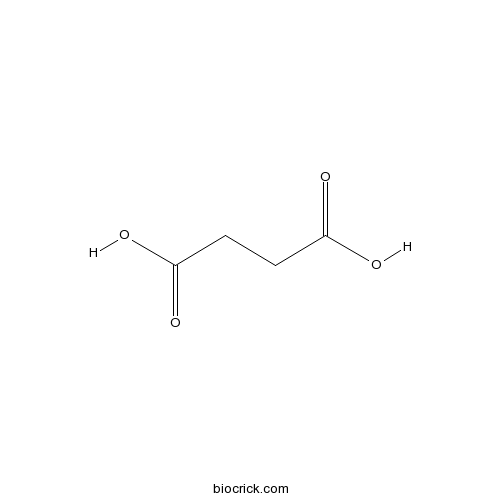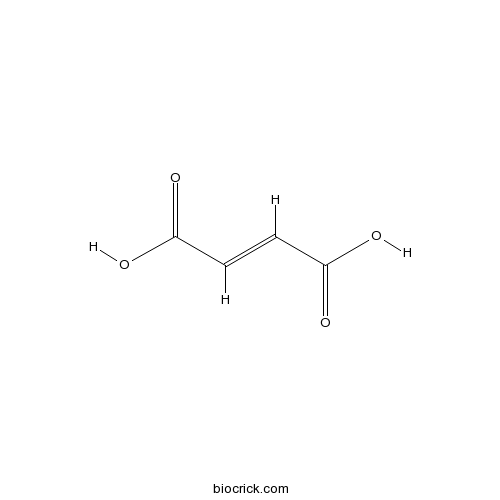Hibiscus tiliaceus
Hibiscus tiliaceus
1. The products in our compound library are selected from thousands of unique natural products; 2. It has the characteristics of diverse structure, diverse sources and wide coverage of activities; 3. Provide information on the activity of products from major journals, patents and research reports around the world, providing theoretical direction and research basis for further research and screening; 4. Free combination according to the type, source, target and disease of natural product; 5. The compound powder is placed in a covered tube and then discharged into a 10 x 10 cryostat; 6. Transport in ice pack or dry ice pack. Please store it at -20 °C as soon as possible after receiving the product, and use it as soon as possible after opening.
Natural products/compounds from Hibiscus tiliaceus
- Cat.No. Product Name CAS Number COA
-
BCN5890
Succinic acid110-15-6
Instructions

-
BCN5989
Fumaric acid110-17-8
Instructions

Salt management strategy defines the stem and leaf hydraulic characteristics of six mangrove tree species.[Pubmed: 28100712]
Mangroves in hypersaline coastal habitats are under constant high xylem tension and face great risk of hydraulic dysfunction. To investigate the relationships between functional traits and salt management, we measured 20 hydraulic and photosynthetic traits in four salt-adapted (SA) and two non-SA (NSA) mangrove tree species in south China. The SA species included two salt secretors (SSs), Avicennia marina (Forsskål) Vierhapper and Aegiceras corniculatum (L.) Blanco and two salt excluders (SEs), Bruguiera gymnorrhiza (L.) Savigny and Kandelia obovata (L.) Sheue et al. The two NSA species were Hibiscus tiliaceus (L.) and Pongamia pinnata (L.) Merr. Extremely high xylem cavitation resistance, indicated by water potential at 50% loss of xylem conductivity (Ψ50; -7.85 MPa), was found in SEs. Lower cavitation resistance was observed in SSs, and may result from incomplete salt removal that reduces the magnitude of xylem tension required to maintain water uptake from the soil. Surprisingly, the NSA species, P. pinnata, had very low Ψ50 (-5.44 MPa). Compared with NSAs, SAs had lower photosynthesis, vessel density, hydraulic conductivity and vessel diameter, but higher sapwood density. Eight traits were strongly associated with species' salt management strategies, with predawn water potential (ΨPD) and mean vessel diameter accounting for 95% flow (D95) having the most significant association; D95 separated SAs from NSAs and SEs had the lowest ΨPD. There was significant coupling between hydraulic traits and carbon assimilation traits. Instead of hydraulic safety being compromised by xylem efficiency, mangrove species with higher safety had higher efficiency and greater sapwood density (ρSapwood), but there was no relationship between ρSapwood and efficiency. Principal component analysis differentiated the species of the three salt management strategies by loading D, D95 and vessel density on the first axis and loading ΨPD, Ψ50 and water potential at 12% loss of xylem conductivity (Ψ12), ρSapwood and quantum yield on the second axis. Our results provide the first comparative characterization of hydraulic and photosynthetic traits among mangroves with different salt management strategies.
Evaluation of pharmacological activity of Hibiscus tiliaceus.[Pubmed: 27516947]
Hibiscus tiliaceus, locally known as Bhola was examined for phytochemical properties and its cytotoxic, antibacterial, analgesic and neuropharmacological activities using the ethanol extract of leaf and bark. The phytochemical analysis of the leaf extract indicated the presence of tannins, whereas bark extract indicated the presence of alkaloid, reducing sugar and tannins. A preliminary cytotoxicity of these extracts was determined by a simple and low cost assay using brine shrimp lethality. The leaf extract of the plant exhibited moderate cytotoxic effect (LC50: 20 µg/ml, LC90: 40 µg/ml) whereas the bark extract exhibited low cytotoxic effect (LC50: 50 µg/ml). In the analgesic test, the leaf extract showed comparatively high analgesic action than bark extract. There was no activity found in the leaf extract against the test bacterial strains, however bark extract exhibited a very little inhibitory effect on Staphylococcus aureus and Staphylococcus epidermidis. In the neuropharmacological test, the leaf and bark extract produced a decrease in both the time of onset of sleeping and the total sleeping time. The present study showed evidence that both leaf and bark extract of H. tiliaceus contain medicinally important bioactive compounds, thereby used as traditional medicine.
[Pharmacological study on hemostasis, analgesic and anti inflammation effects of the alcohol extract of Hibiscus tiliaceus].[Pubmed: 24761677]
To study the effects of hemostasis, analgesic and anti inflammation of the alcohol extract of Hibiscus tiliaceus and offer pharmacological and experimental basis for its safe and effective use in clinic.
Resting and energy reserves of Aedes albopictus collected in common landscaping vegetation in St. Augustine, Florida.[Pubmed: 24199497]
The resting behavior of Aedes albopictus was evaluated by aspirating diurnal resting mosquitoes from common landscape vegetation in residential communities in St. Augustine, FL. Energy reserves of the resting mosquitoes were analyzed to determine if there was a correlation between mosquito resting habitat and energy accumulation. Six species of plants were selected and 9 collections of resting mosquitoes were aspirated from each plant using a modified John W. Hock backpack aspirator during June and July 2012. Eight mosquito species were collected, with Ae. albopictus representing 74% of the overall collection. The number of Ae. albopictus collected varied significantly with the species of vegetation. When comparing the vegetation and abundance of resting mosquitoes, the highest percentages of Ae. albopictus were collected resting on Ruellia brittoniana (Mexican petunia), Asplenium platyneuron (fern), Gibasis geniculate (Tahitian bridal veil), followed by Plumba goauriculata (plumbago), Setcreasea pallida (purple heart), and Hibiscus tiliaceus (hibiscus). There were significant differences in lipid and glycogen accumulation based on type of vegetation Ae. albopictus was found resting in. Resting mosquitoes' sugar reserves were not influenced by species of vegetation. However, there was an overall correlation between vegetation that serves as a resting habitat and energy reserve accumulation. The results of our study demonstrate the potential to target specific vegetation for control of diurnal resting mosquitoes.
New or little known taxa of the plant bug tribe Hallodapini (Hemiptera: Heteroptera: Miridae: Phylinae) from Thailand, with descriptions of three new species of the genus Acrorrhinium Noualhier.[Pubmed: 26295117]
New or little known genera and species of the phyline plant bug tribe Hallodapini are documented. The genus Acrorrhinium Noualhier is reported from Thailand for the first time and diagnosed. Three new species, Acrorrhinium kranion, A. lancialium and A. tritonion, are described. The immature forms are confirmed for A. lancialium (5th instar) and A. tritonion (4th instar); the latter species was found to be associated with Hibiscus tiliaceus L. The little known hallodapines in Asia, Alloeomimus muiri Schuh and Clapmarius thailandana Schuh, are also diagnosed. An annotated check list of the Hallodapini in Thailand and color digital images in life for all currently known Thai species are provided. Hallodapus brunneus (Poppius) is reported from the Oriental Region for the first time.
Comparison of the formation of nicotinic acid conjugates in leaves of different plant species.[Pubmed: 22983143]
There are three metabolic fates of nicotinic acid in plants: (1) nicotinic acid mononucleotide formation for NAD synthesis by the so-called salvage pathway of pyridine nucleotide biosynthesis; (2) nicotinic acid N-glucoside formation; and (3) trigonelline (N-methylnicotinic acid) formation. In the present study, the metabolism of [carbonyl-(14)C]nicotinamide was investigated in leaves of 23 wild plant species. All species readily converted nicotinamide to nicotinic acid, and only a fraction of nicotinic acid was utilised for NAD and NADP synthesis. The remaining nicotinic acid is converted to the nicotinic acid conjugates. Only one plant species, Cycas revoluta, produced both nicotinic acid N-glucoside and trigonelline; the other 22 species produced one or other of the conjugates. The nicotinic acid N-glucoside-forming plants are Cyathea lepifera, Arenga trewmula var. englri, Barringtonia racemosa, Ilex paraguariensis, Angelica japonica, Scaevola taccada and Farfugium japonicum. In contrast, trigonelline is formed in C. lepifera, Ginkgo biloba, Pinus luchuensis, Casuarina equisetifolia, Alocasia odora, Pandanus odoratissimus, Hylocereus undatus, Kalanchoe pinnata, Kalanchoe tubiflora, Populus alba, Garcinia subelliptica, Oxalis corymbosa, Leucaena leucocephala, Vigna marina, Hibiscus tiliaceus and Melicope triphylla. The diversity of nicotinic acid conjugate formation in plants is discussed using these results and our previous investigation involving a few model plants, various crops and ferns. Nicotinic acid N-glucoside formation was restricted mostly to ferns and selected orders of angiosperms, whereas other plants produce trigonelline. In most cases the formation of both nicotinic acid conjugates is incompatible, but some exceptions have been found.
Antimicrobial aflatoxins from the marine-derived fungus Aspergillus flavus 092008.[Pubmed: 22941481]
A new aflatoxin, aflatoxin B(2b) (1), together with six known compounds, were isolated from the marine-derived fungus Aspergillus flavus 092008 endogenous with the mangrove plant Hibiscus tiliaceus (Malvaceae). The structure of 1 was determined by the spectroscopic and chemical methods. Compound 1 exhibited a moderate antimicrobial activity against Escherichia coli, Bacillus subtilis and Enterobacter aerogenes, with MIC values of 22.5, 1.7 and 1.1 M, respectively. Compound 1 also showed a weak cytotoxicity against A549, K562 and L-02 cell lines, with IC(50) values of 8.1, 2.0 and 4.2 M, respectively. The results showed that hydration and hydrogenation of (8)-double bond significantly reduces the cytotoxicity of aflatoxins, while the esterification at C-8 increases the cytotoxicity.
Antidepressant-like effects of methanol extract of Hibiscus tiliaceus flowers in mice.[Pubmed: 22494845]
Hibiscus tiliaceus L. (Malvaceae) is used in postpartum disorders. Our purpose was to examine the antidepressant, anxiolytic and sedative actions of the methanol extract of H. tiliaceus flowers using animal models.


